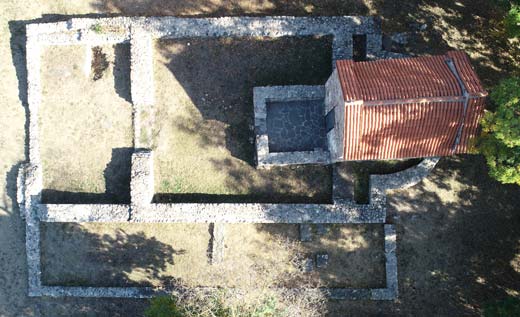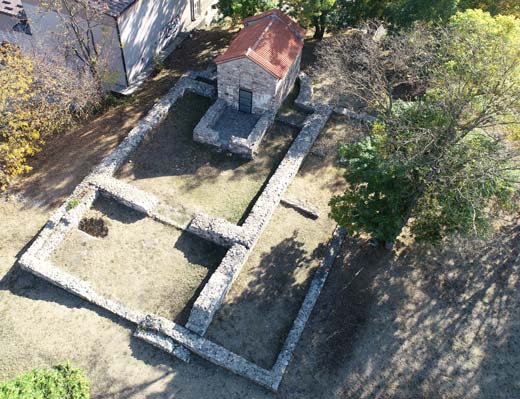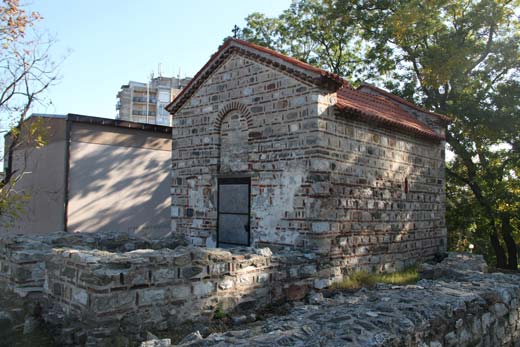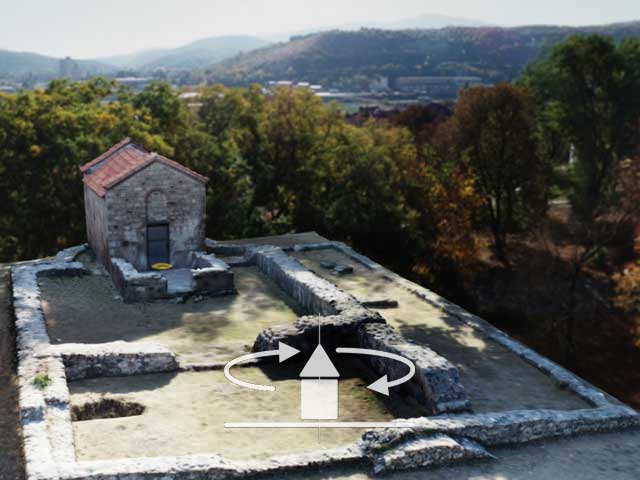Jug Bogdan church
Protected cultural monument of great importance, listed as SK 229 with the Republic Institute for the protection of monuments of cultural heritage.
Latin or Jug Bogdan churchProkuplje
Location
Latin or Jug Bogdan Church is located at the bottom of the east slope of the Hisar hill, on the narrow pass called Brana, on the west entrance to the town, about 200 meters from the St Procopius Church. It is part of the monument unit comprising Hisar Town, St. Procopius Church and Latin Church.

Research
Archaeological research was performed between 1970 and 1975 by Archaeological Institute from Belgrade, when the foundations of two older churches and a big necropolis were discovered. At the same time, conservatory work was performed by Institute for the protection of monuments of cultural heritage from Nis.

History
Small, single-nave church with narthex was built in mid-14th century, at the same time when the edifice on the Hisar hill was built or renewed, and when the already existing St. Procopius church obtained the south nave where the relics of St. Procopius were placed. The church was built on an already familiar holy place where in the late 1st century the temple (with columns) dedicated to Hercules templum in antis had been, judging by the discovered part of the inscription pane and a marble statuette of Hercules.
The temple was destroyed at some point and on its remains in the 6th century, an early Christian basilica of monumental proportions was built, containing built tombs and graves (over 200 graves in the necropolis were researched from late antiquity to middle ages). The basilica was most likely icono-painted, judging by the remains of pieces of frescoes, the floors were covered with tiles, partly in mosaic. The Orthodox church which is attributed to Jug Bogdan is much smaller than earlier temples, but the top of the apse matches the top of the earlier church.

Description
Latin-Jug Bogdan church is a small, single-nave church with a narthex, built in bricks and stone, with semi-circular vault and gabled roof. It has a small apse, semicircular on the inside and outside. The narthex is preserved and conserved only in the foundation zone.
It is certain that the church was built in the first half of the 14th century, since it was painted in the middle of the said century. Since it had been without a roof for a long time and the frescoes were thus exposed to atmospheric influences, they are not very well preserved. In the lower zone of the altar apse, there used to be the figures of six holy High Priests, three on each side. In the second zone, there are the images of the Annunciation of the Mother of God and the Communion of the apostles, in the apse itself. The south wall depicts the Mother of God with Christ in her arms, next to her John the Baptist and the holy warriors: Demetrius, George, Artemius and Mercurius. In the second zone the following scenes are preserved: Washing the feet of Jesus, Last supper, Entry into Jerusalem. On the western wall the figures of Constantine and Helen are only barely visible, while the north wall has almost completely lost its fresco decoration.
Despite severe damage to the frescoes, it can be noticed that they were done by a skillful master and that this painting style belongs to the group of small churches built throughout Emperor Dusan’s state by lords, hiring masters according to their status and possibilities.

Folk belief
In the folk lore, the small medieval church is related to Jug Bogdan, the ruler of Toplica, the father of princess Milica and nine Jugovic sons. The church was named Latin because it is believed that the Ragusans, Latins, used it for their worship. This is corroborated by several preserved Ragusan monuments originating for the 17th century, that are still kept in the church today.
The church is dedicated to the Holy Mother of God and celebrates the Intercession of the Theotokos on the 14th October. Since this is a women’s holiday, it is mostly women who gather for the service in the small church.
Julka Kuzmanović Cvetkovićarcheologist
